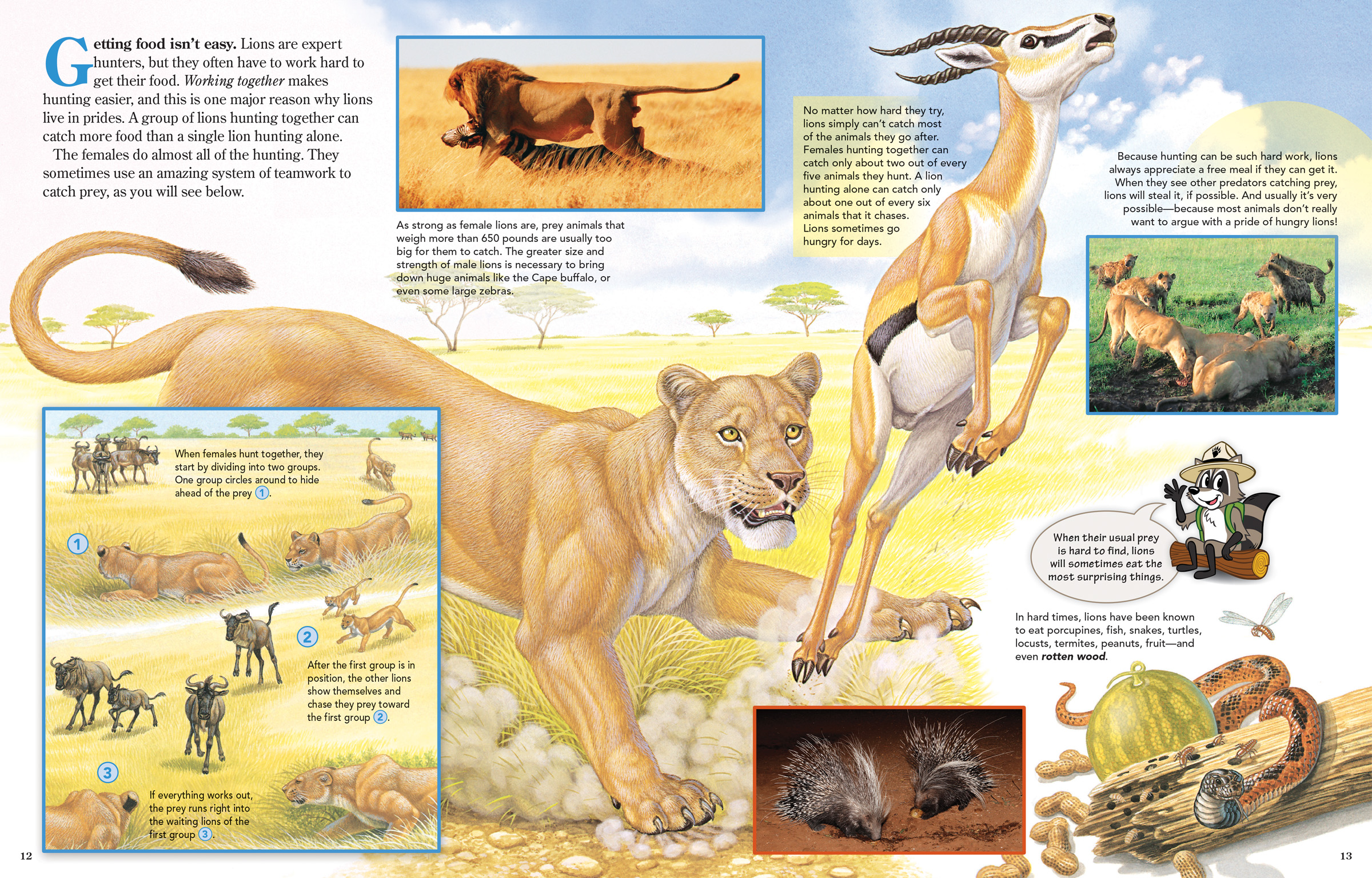
Getting Food Isn’t Easy
ByGetting food isn’t easy. Lions are expert hunters, but they often have to work hard to get their food. Working together makes hunting easier, and this is one major reason why lions live in prides. A group of lions hunting together can catch more food than a single lion hunting alone.
The females do almost all of the hunting. They sometimes use an amazing system of teamwork to catch prey, as you will see below.
As strong as female lions are, prey animals that weigh more than 650 pounds are usually too big for them to catch. The greater size and strength of male lions is necessary to bring down huge animals like the Cape buffalo, or even some large zebras.
When females hunt together, they start by dividing into two groups. One group circles around to hide ahead of the prey.
After the first group is in position, the other lions show themselves and chase they prey toward the first group.
If everything works out, the prey runs right into the waiting lions of the first group.
Because hunting can be such hard work, lions always appreciate a free meal if they can get it. When they see other predators catching prey, lions will steal it, if possible. And usually it’s very possible—because most animals don’t really want to argue with a pride of hungry lions!
No matter how hard they try, lions simply can’t catch most of the animals they go after. Females hunting together can catch only about two out of every five animals they hunt. A lion hunting alone can catch only about one out of every six animals that it chases. Lions sometimes go hungry for days.

When their usual prey is hard to find, lions will sometimes eat the most surprising things.
In hard times, lions have been known to eat porcupines, fish, snakes, turtles, locusts, termites, peanuts, fruit—and even rotten wood.

